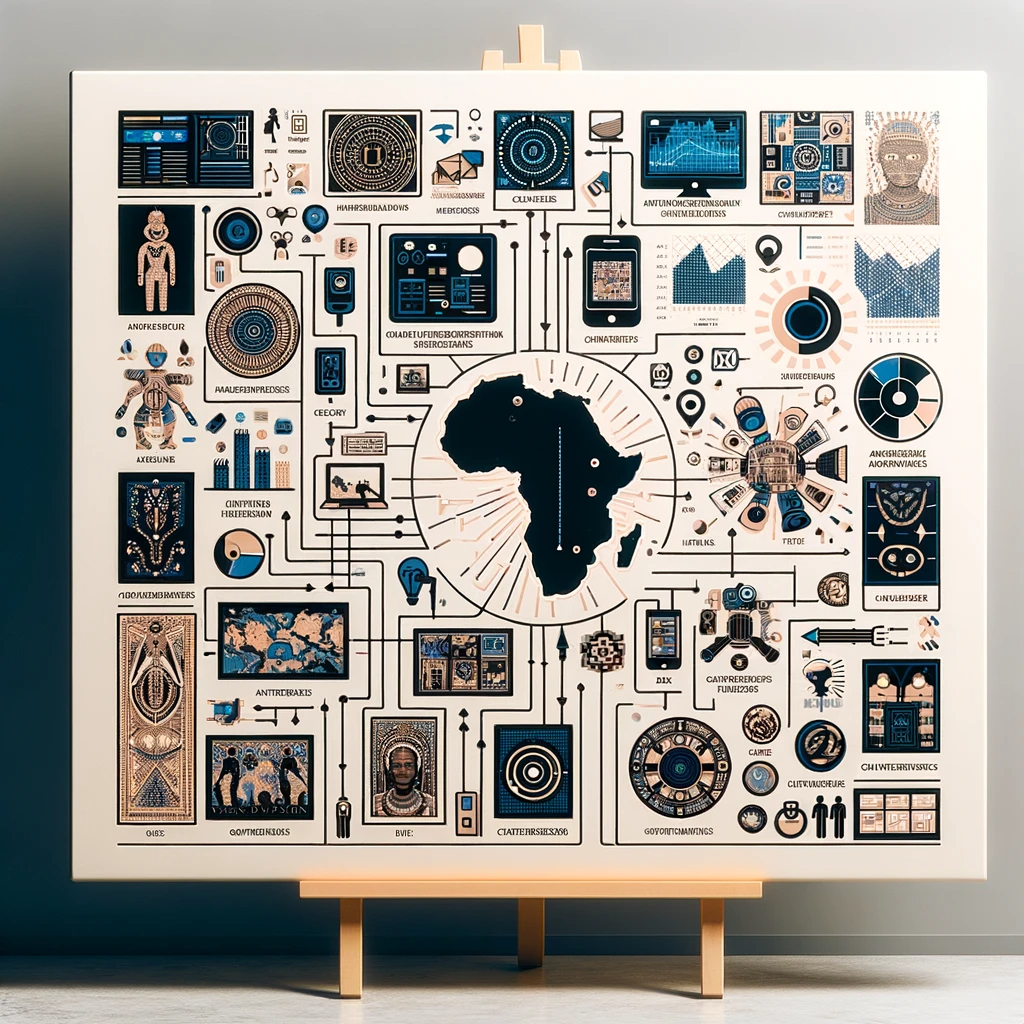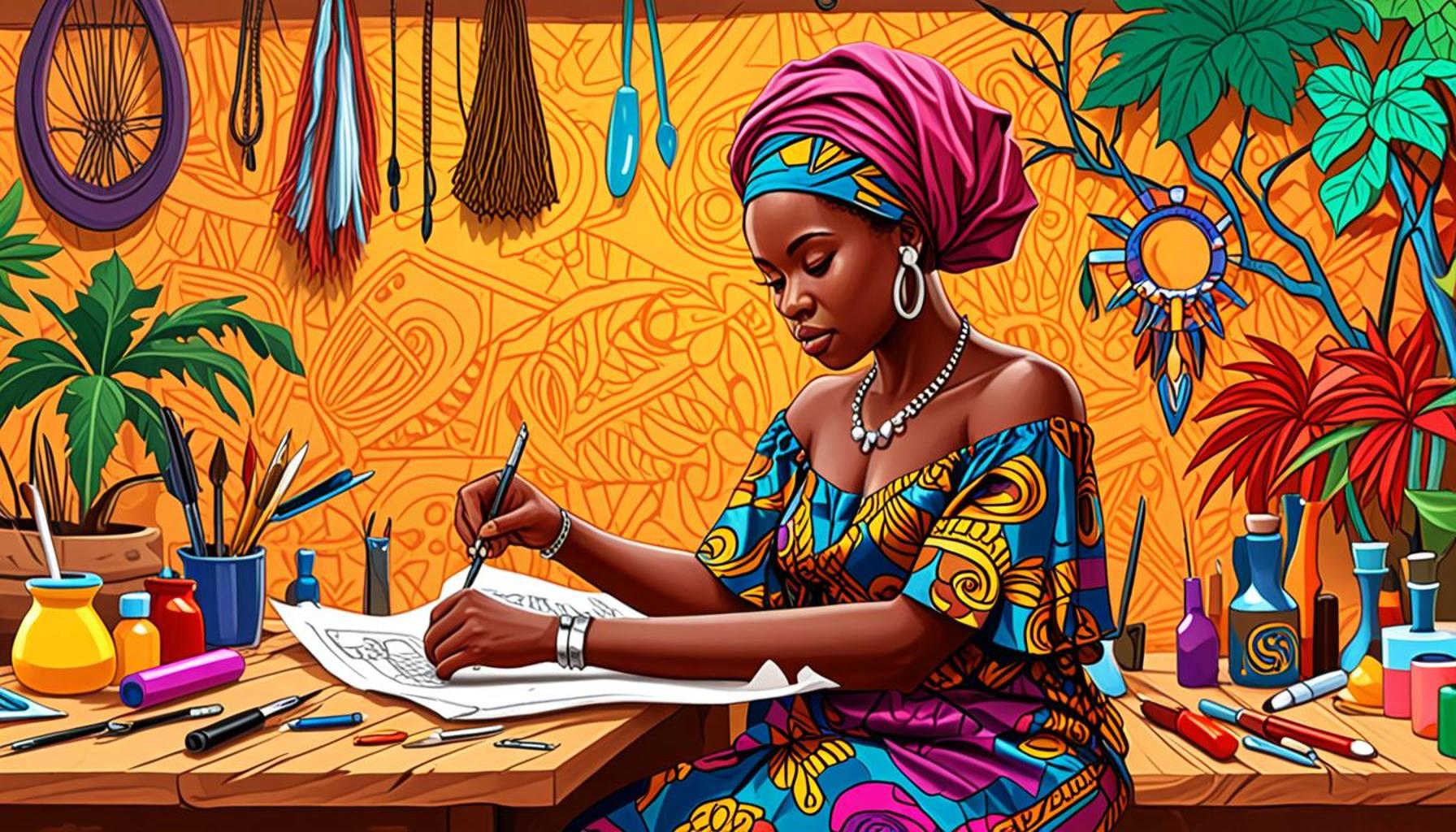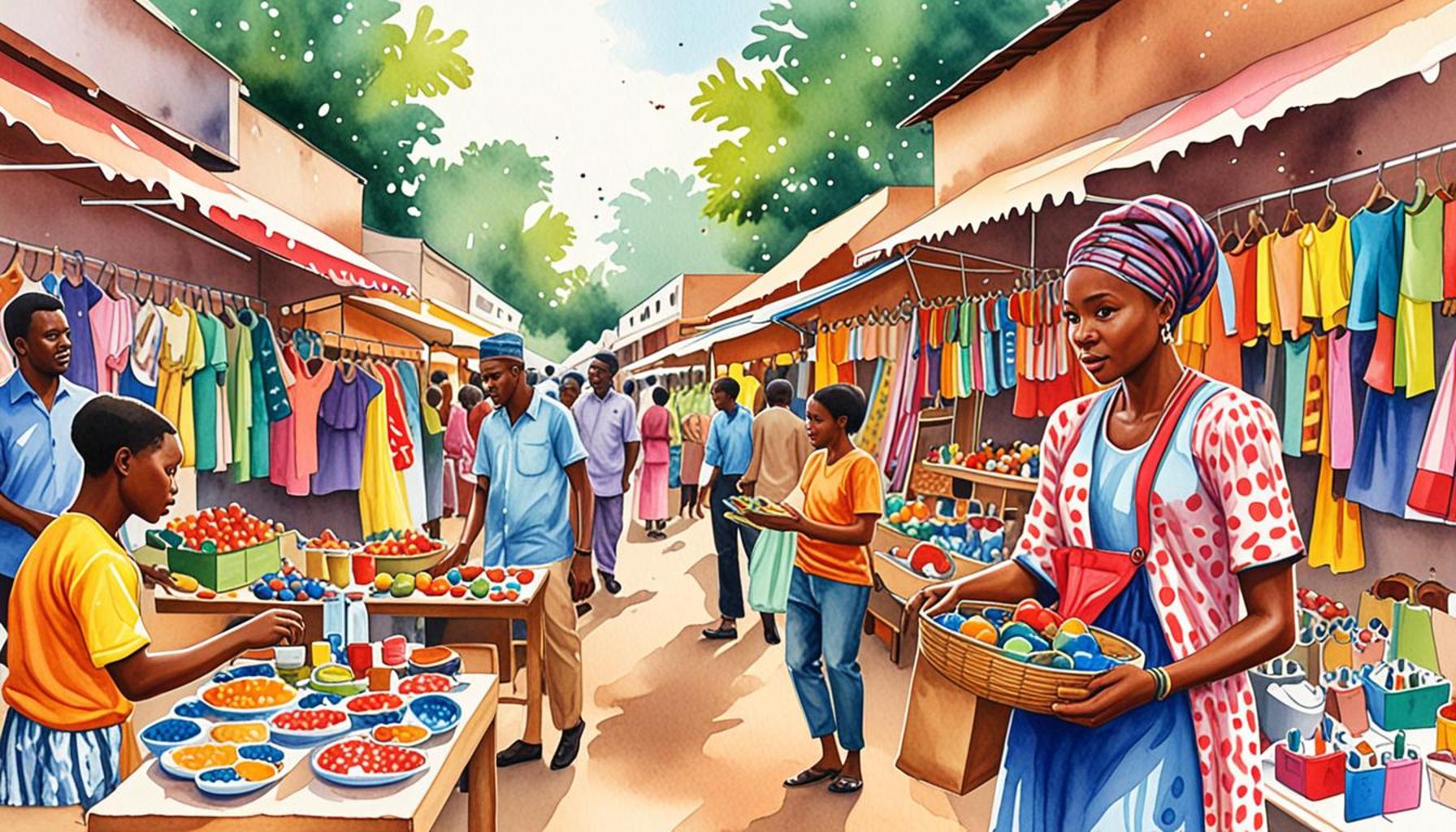The Evolution of Craft Techniques: How Innovation is Transforming Traditional Craftsmanship in Nigeria

Craftsmanship Evolution in Nigeria
The landscape of craftsmanship in Nigeria is experiencing a fascinating metamorphosis. Traditional techniques, which have been meticulously passed down through generations, are now harmoniously blending with innovative methods driven by the rapid rise of technology and the forces of globalization. This dynamic shift is not only reshaping the way artisans create their masterpieces but also reimagining how they market their products, pushing the boundaries of local craftsmanship to reach global horizons.
Key Influencing Factors
Several pivotal factors are playing a significant role in this evolution, showcasing the adaptability and resilience of Nigerian artisans:
- Technology Integration: More artisans are employing digital tools to enhance their design processes and marketing strategies. For instance, software for 3D modeling allows craftsmen to visualize products before actual production, ensuring precision and creativity.
- Global Market Access: The rise of e-commerce platforms such as Jumia and Konga enables local artisans to reach a wider audience beyond geographical confines. Artisans can now showcase their products on platforms like Etsy and Instagram, attracting international buyers and presenting Nigerian craftsmanship to the world.
- Collaboration: Innovative partnerships between local artisans and international designers foster new creative expressions. This cross-pollination of ideas often results in unique products that marry traditional aesthetics with contemporary design sensibilities, appealing to diverse customer bases.
The Revival of Traditional Crafts
As Nigerian craftsmanship adapts to the demands of the modern economy, several traditional crafts are witnessing a revitalization. For example, indigenous textiles such as Aso Oke and Adire are not only preserving cultural narratives but are also evolving to cater to contemporary fashion trends. Pottery, which once served utilitarian purposes, is now being designed as luxury home decor. Furthermore, beadwork, synonymous with cultural significance in ceremonies, is being creatively reimagined into chic accessories that appeal to a younger, fashion-conscious audience.
Challenges and Opportunities
The journey towards embracing innovation does not come without challenges. A critical aspect of this evolution is the need to maintain authenticity while welcoming new technologies and ideas. Artisans face the delicate task of ensuring that the essence of their cultural heritage remains intact even as they explore contemporary methods and markets. Maintaining the integrity of craftsmanship while adapting to changing consumer preferences is paramount.
Reshaping Artisan Roles
This evolving landscape is redefining the role of artisans in society. They are transforming from traditional creators to savvy entrepreneurs, taking charge of their brand narratives and client relationships. The stories behind their creations are becoming integral parts of marketing strategies, as consumers increasingly seek a deeper connection with the origins of their products.

In conclusion, as Nigerian craftsmanship continues to evolve, it tells a compelling story of resilience, adaptation, and creativity. From the bustling markets of Lagos to the serene landscapes of Kano, artisans are steering their crafts into modernity while holding onto the strong threads of tradition. This dynamic sector not only contributes to the economy but also enriches Nigeria’s cultural tapestry, inviting both local and global audiences to engage with its rich heritage.
YOU MAY ALSO LIKE: Read read another article
Driving Forces Behind Craftsmanship Transformation
The evolution of craftsmanship in Nigeria is not merely a trend, but rather a response to a multitude of dynamic influences that shape the industry. As artisans navigate through a landscape rich with history and cultural importance, they are also embracing challenges and seizing opportunities ushered in by modern advancements. Understanding these driving forces is essential to grasp how traditional craftsmanship is being reshaped.
Emerging Technologies in Craftsmanship
One of the most significant catalysts in the evolution of craft techniques is the integration of technology. Digital tools are revolutionizing the methodologies artisans employ. For instance, the use of computer-aided design (CAD) software allows artisans to render their ideas with accuracy and explore various iterations of design, a leap from the traditional hand-drawn models. By employing technology such as laser cutting and CNC machines, artisans can also produce intricate designs that were previously labor-intensive, thereby enhancing efficiency and precision.
Networking and Knowledge Sharing Platforms
The advent of social media has further connected local artisans with a global audience. Platforms like Facebook, Instagram, and TikTok serve not only as marketplaces but as avenues for knowledge sharing. Artisans can now attend virtual workshops and collaborate with skilled practitioners from around the world, enabling them to learn new techniques and modern design philosophies that blend seamlessly with their traditional skills. This cross-cultural exchange fosters creativity and broadens the horizons of Nigerian craftsmanship.
Socioeconomic Influences
The economic landscape in Nigeria also plays a pivotal role in shaping artisanal practices. As urbanization continues, there is an increasing demand for contemporary items that reflect cultural heritage while meeting modern consumer preferences. This shift encourages artisans to experiment, often leading to the emergence of hybrid products that merge traditional aesthetics with contemporary functionality. For example:
- Furniture Design: Local craftsmen are creating modern furniture that incorporates traditional Yoruba carvings, appealing both to local tastes and international markets.
- Jewelry Making: Contemporary jewelry artists are using traditional beadwork techniques to create pieces that resonate with a younger demographic in search of unique accessories.
- Fashion: Designers are integrating indigenous textile patterns into global fashion trends, showcasing how local fabrics can satisfy international style demands.
Furthermore, economic empowerment initiatives aimed at supporting artisans are ramping up. Organizations and grants are providing access to resources and education, informing artisans about sustainable practices and business management. This newfound understanding equips them to transform their crafts into lucrative ventures, allowing for growth and sustainability within the sector.
As these forces converge, the fusion of traditional craftsmanship and modern methodologies becomes not just a means of survival but a pathway to expand Nigerian culture’s presence on a global scale. The implications of this transformation resonate far beyond economic interactions; they imbue a sense of pride and identity, creativity, and a shared narrative among artisans and consumers alike.
The Role of Innovation in Revitalizing Nigerian Crafts
As we delve deeper into “The Evolution of Craft Techniques: How Innovation is Transforming Traditional Craftsmanship in Nigeria,” it’s paramount to recognize the profound impact that innovation has had in revitalizing traditional crafts. The integration of cutting-edge technology and traditional methods has birthed a new renaissance in Nigerian artistry. From textile production to pottery and bead making, artisans are embracing technology to enhance their craft while preserving the rich heritage embedded within these practices.
Adoption of Digital Tools
One of the striking advancements is the use of digital tools. Artisans now have access to software that allows them to design intricate patterns that were once painstakingly done by hand. Computer-Aided Design (CAD) has transformed how fabrics are woven, offering an unprecedented level of precision and creativity. This not only reduces production time but also allows for greater experimentation with designs, leading to a vibrant exploration of cultural expressions.
Collaborations and Skill Development
Furthermore, collaborations between seasoned artisans and modern designers have resulted in innovative product lines that marry tradition with contemporary aesthetics. Training initiatives play a crucial role here, as they equip younger generations with the skills needed to learn traditional methods while integrating modern technologies. Programs focused on entrepreneurship and sustainability provide artisans with crucial business acumen, enhancing their ability to succeed in a competitive market, both locally and globally.
Global Influence and Market Reach
The globalization of the craft sector is yet another critical aspect of this evolution. Social media platforms have emerged as powerful tools for marketing, enabling artisans to showcase their work to a global audience. This increased visibility has led to collaborations with international brands, fostering a mutual appreciation of culture and craftsmanship. The demand for authentic, handmade products continues to rise, as consumers around the world seek unique items that tell a story.
The Cultural Renaissance
As innovation takes root, it simultaneously fosters a cultural renaissance. By reviving interest in traditional crafts, Nigeria is seeing a resurgence of pride in its cultural identity. The blending of history and innovation encourages not just preservation, but also improvement—creating new masterpieces that reflect both the past and the future. This organic merger of various techniques highlights the adaptability of Nigerian craftsmanship, shedding light on a path that honors age-old traditions while looking forward.
Challenges Ahead
However, challenges persist. With modernization comes the risk of losing the very essence that makes traditional crafts distinctive. The balance between maintaining authenticity and embracing innovation is delicate. Ensuring that artisans remain connected to their roots while exploring new horizons will be key in the sustainable evolution of these practices.The ongoing transformation of Nigerian craftsmanship underscores the beauty of innovation and creativity. As we continue to explore this topic, understanding these dynamics will be essential in appreciating how traditional crafts can thrive in an ever-changing world.
LEARN MORE: This related article may interest you
Balancing Tradition and Modernity in Craftsmanship
As the landscape of craftsmanship in Nigeria evolves, the challenge of balancing traditional techniques with modern demands becomes more pronounced. Artisans find themselves at a critical juncture where they must choose how much of their rich heritage to integrate into their work while simultaneously appealing to contemporary sensibilities.
Preserving Cultural Heritage through Innovation
One of the critical aspects of this transformation is the conscious effort by artisans to preserve cultural heritage through innovative practices. Materials that have been used for centuries, such as adire, a traditional dyed fabric of the Yoruba people, are now being utilized in ways that resonate with modern aesthetics. For example, artisans are creating not just garments but also home décor items and accessories that incorporate adire, appealing to both local and international markets. This innovation serves as a reminder of the cultural significance of these materials while ensuring they remain relevant in today’s fashion landscape.
Collaboration between Artisans and Designers
The synergy between traditional artisans and contemporary designers is producing a new renaissance in Nigeria’s crafts sector. Collaborative projects allow seasoned artisans to share their expertise while modern designers introduce fresh concepts. A prime example is the partnership between local bead artisans and fashion designers, where traditional beading techniques are woven into modern garment designs, creating a distinct hybrid that captures the essence of both worlds. These collaborations not only enhance the skill set of artisans but also amplify the reach of their crafts through socially responsible branding that focuses on authenticity and sustainability.
Creating Marketplaces for Craftsmanship
The rise of dedicated marketplaces for handmade crafts provides platforms where artisans can showcase their work to a global audience. Initiatives such as the Nigerian Artisan Market and Jumia Crafts empower local craftspeople by bridging the gap between traditional craftsmanship and the e-commerce boom. By making their products easily accessible online, artisans can leverage international shipping and engage with a clientele that values unique, handmade items. These platforms not only promote traditional crafts but also allow artisans to define their narrative, moving beyond the age-old portrayal of crafts as being solely for local consumption.
- Local Exhibitions: Events like the Artisan Fair Lagos provide artisans a physical space to showcase creativity, drawing attention to their work while celebrating Nigeria’s diverse cultural heritage.
- Global Partnerships: Collaborations with international brands are becoming more frequent, allowing artisans to present their work on larger stages, transforming local techniques into globally recognized art forms.
The push towards sustainability within the craft sector further complements the integration of innovation. Artisans are now adopting environmentally friendly practices, utilizing reclaimed or locally sourced materials to craft their work. This not only enhances their appeal to eco-conscious consumers but also aids in the preservation of Nigeria’s natural resources.
Through these strategies, artisans in Nigeria are not merely adapting to change but are actively participating in the creation of a new narrative around craftsmanship that honors the past while embracing the future. The journey involves leveraging both tradition and innovation, ensuring that Nigerian craftsmanship remains a dynamic, evolving art form that continues to inspire and captivate audiences worldwide.
YOU MAY ALSO LIKE: Read read another article
Conclusion: A New Era for Nigerian Craftsmanship
The journey of traditional craftsmanship in Nigeria is not merely one of survival; it is a vibrant transformation that embraces both innovation and heritage. As artisans integrate modern techniques and aesthetics into their work, they are not abandoning their roots but are instead redefining them. The collaboration between traditional craftspersons and contemporary designers fosters a creative dialogue that enriches both parties, resulting in unique products that resonate well with today’s consumers.
Furthermore, dedicated marketplaces and exhibitions are crucial in bridging the gap between local artisans and global audiences. Initiatives such as the Nigerian Artisan Market and artistic fairs showcase the diverse cultural tapestries of Nigeria while allowing artisans to narrate their stories to the world. This exposure plays a pivotal role in raising awareness about handcrafted items and highlighting their significance in a rapidly changing world.
As the craft sector increasingly prioritizes sustainability, artisans are discovering new ways to utilize ethically sourced materials, ensuring that their art respects both culture and the environment. This commitment to ecological responsibility further strengthens the market appeal of Nigerian craftsmanship among eco-conscious consumers.
In conclusion, the evolution of craft techniques in Nigeria represents more than just a trend; it signifies a profound cultural renaissance. By fusing innovation with traditional practices, talented artisans are crafting a future where their skills are not only preserved but celebrated on an international stage. As these artisans continue to challenge the boundaries of creativity, it becomes evident that the essence of Nigerian craftsmanship will thrive, inspiring and captivating audiences far beyond its borders.


